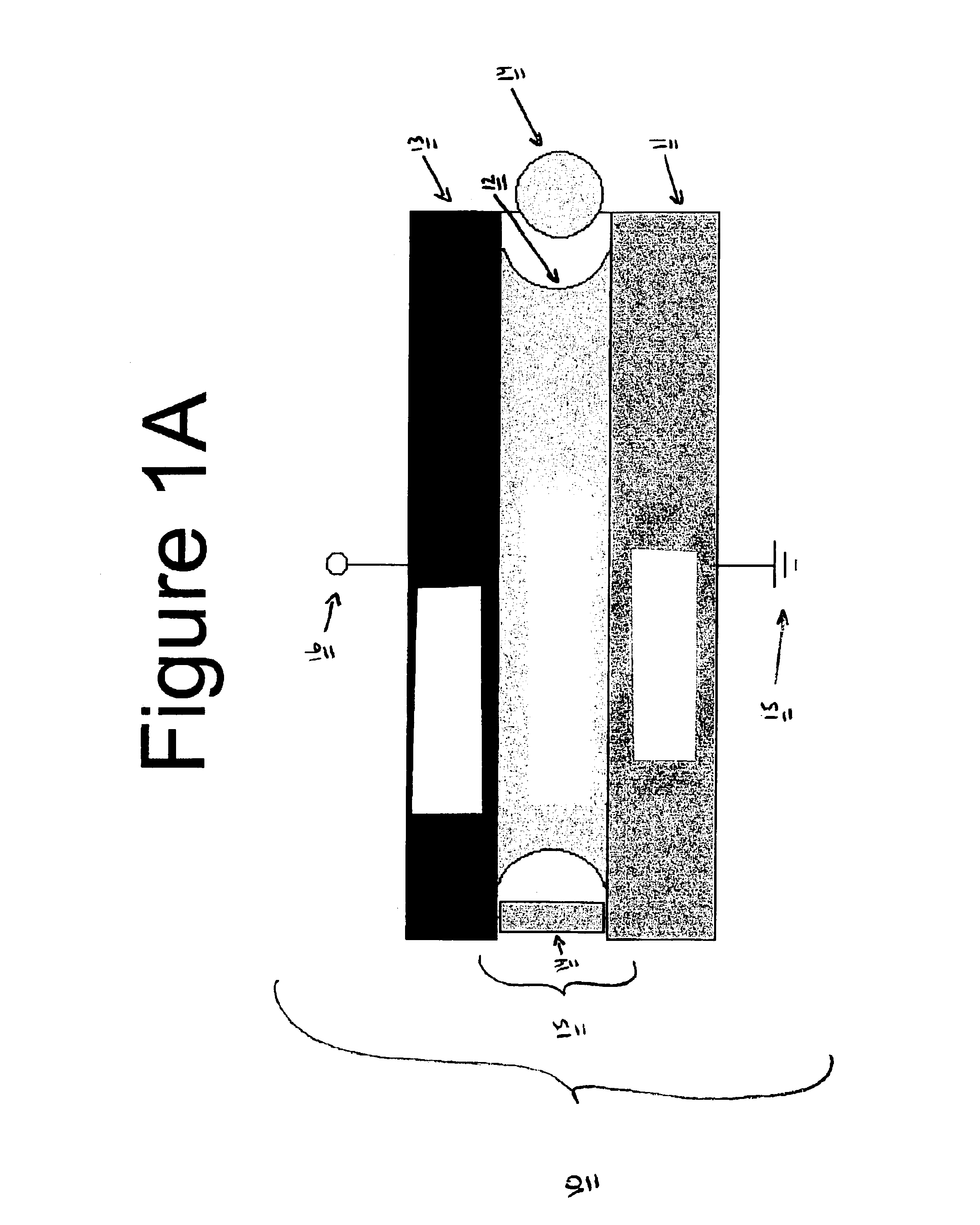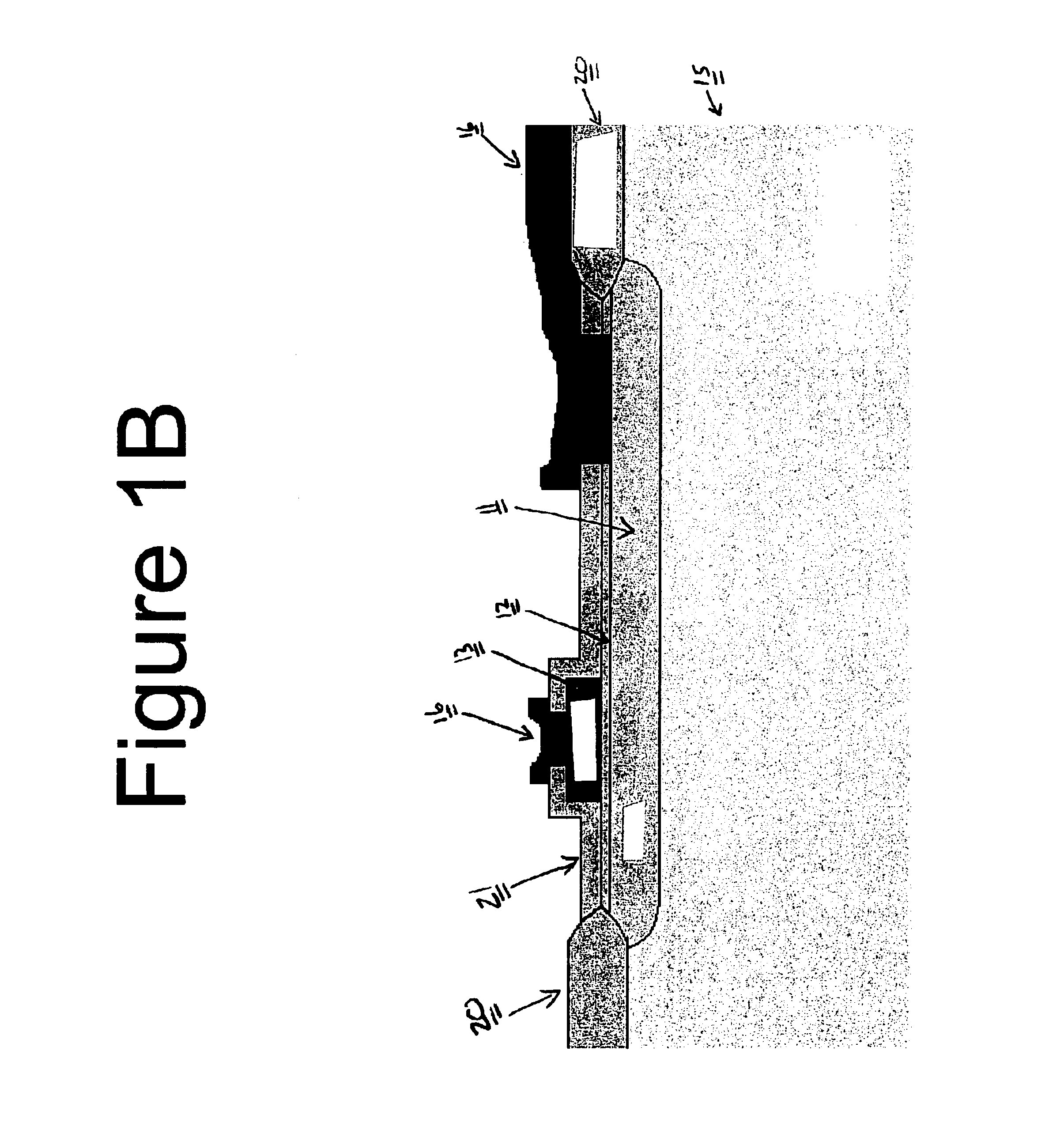Method of making a nanoscale electronic device
a technology of electronic devices and nano-scale, applied in the direction of material nanotechnology, semiconductor devices, electrical devices, etc., can solve the problems of increasing processing power and speed, devices present numerous difficulties in manufacturing, lithography and indeed physical laws, and current cmos transistors cannot be easily scaled to these dimensions
- Summary
- Abstract
- Description
- Claims
- Application Information
AI Technical Summary
Benefits of technology
Problems solved by technology
Method used
Image
Examples
Embodiment Construction
[0022]The present method permits for the creation of electronic devices of nanoscale dimensions. Specifically, the devices made will feature a gap that is between about 0.1 nm and about 100 nm in width. Furthermore, the present method is less susceptible to produce devices that are inoperable by virtue of electrical shorts introduced during the method of making. As described above, some previously employed methods suffer from the tendency to provide a high number of defective devices. This can, in one aspect, be attributed to the inherent assembly order. In those cases in which addition of a second electrical contact is performed after and atop a molecular electronic component, those methods have had the potential drawback that the integrity of the delicate molecular electronic component is often compromised by addition of a second electrical contact. Indeed, the yield of such devices may be less than 5%. Please see for example “Molecular Electronics: Commercial Insights, Chemistry,...
PUM
 Login to View More
Login to View More Abstract
Description
Claims
Application Information
 Login to View More
Login to View More - R&D
- Intellectual Property
- Life Sciences
- Materials
- Tech Scout
- Unparalleled Data Quality
- Higher Quality Content
- 60% Fewer Hallucinations
Browse by: Latest US Patents, China's latest patents, Technical Efficacy Thesaurus, Application Domain, Technology Topic, Popular Technical Reports.
© 2025 PatSnap. All rights reserved.Legal|Privacy policy|Modern Slavery Act Transparency Statement|Sitemap|About US| Contact US: help@patsnap.com



